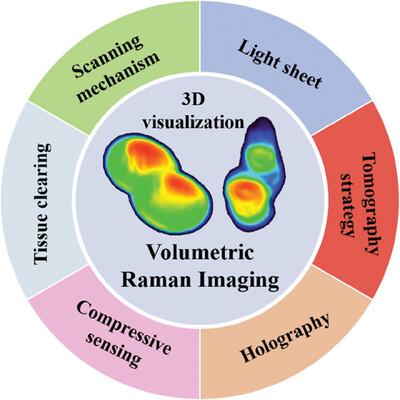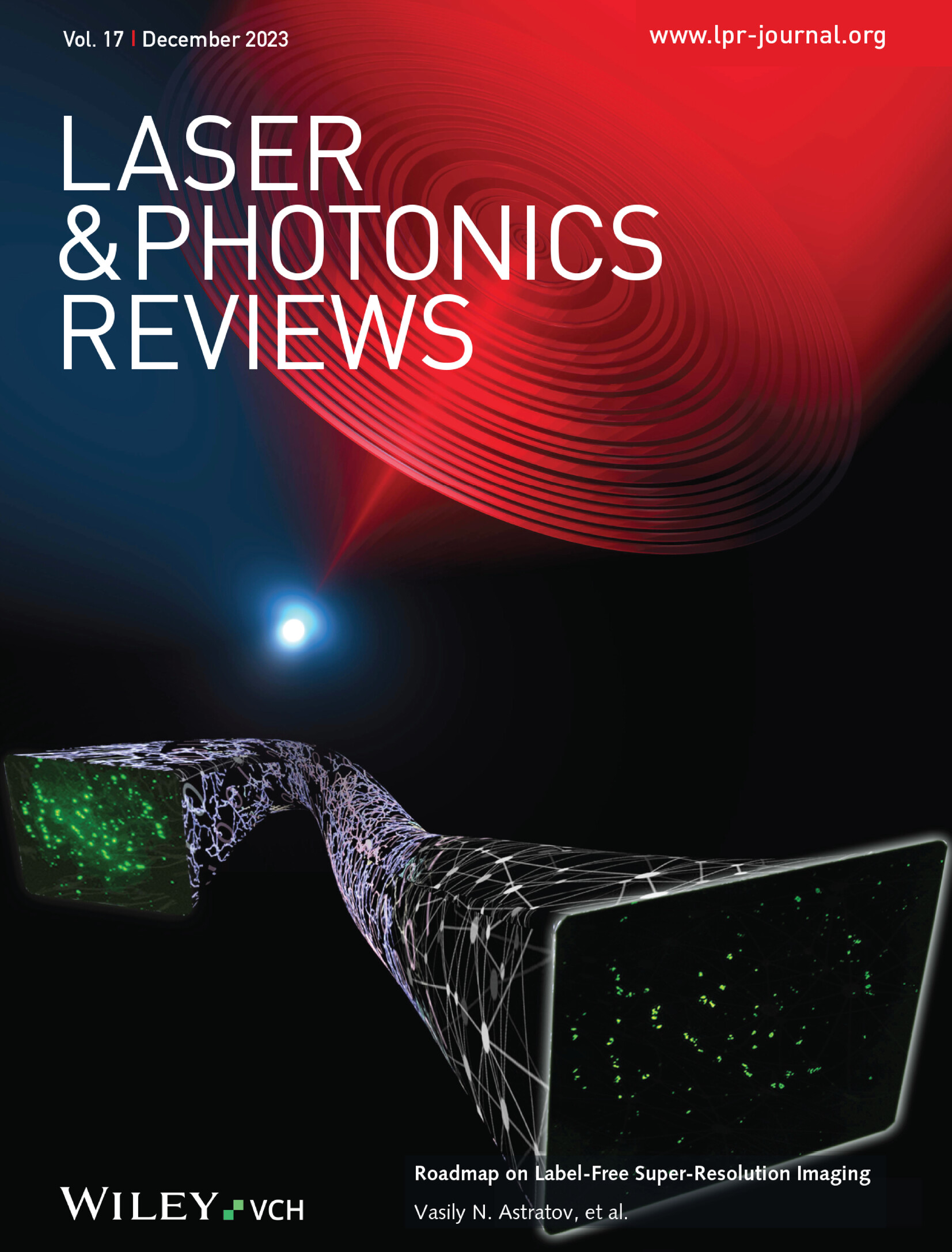拉曼视角下的容积成像:回顾与展望
IF 9.8
1区 物理与天体物理
Q1 OPTICS
引用次数: 0
摘要
容积成像支持从整个容积对三维样本进行定量和全面评估,在生物医学研究领域引起了极大关注。荧光成像技术,如光学切片和光片显微镜,能够重建样品中化学物质的三维分布。然而,目前的方法依赖于外源标签,在活体系统中可能会产生相当大的干扰。拉曼成像为以无标记方式观察生物样本中的成分提供了可行的解决方案。此外,拉曼显微镜与三维方法的整合将有利于在新型设备上对生物医学样本进行研究,这主要得益于空间分辨率、成像速度和整体视野的大幅提升,以及样本更多细节的补充。本综述从拉曼角度探讨了生物样本三维可视化的最新成果,包括扫描机制、光片、层析成像策略、压缩传感、全息成像和组织清除。重要的是,这些平台与生物医学研究兼容,因此可以对整个体积中的化学成分和样品分布进行成像。作为用于生物发现的独特体积成像工具,这些方法可为加速不同研究领域的新发现提供策略。本文章由计算机程序翻译,如有差异,请以英文原文为准。

Volumetric Imaging From Raman Perspective: Review and Prospect
Volumetric imaging, which supports quantitative and comprehensive assessment of a 3D sample from an entire volume, has attracted tremendous attention in biomedical research. Fluorescence imaging techniques, such as optical sectioning and light sheet microscopy, enable to reconstruct the 3D distribution of chemicals within a sample. However, current methods rely on exogenous labels, from which considerable perturbation may be introduced in living systems. Raman imaging offers a feasible solution to visualize components in biological samples in a label-free manner. Besides, the integration of Raman microscopy with 3D approaches will benefit the research of biomedical samples on novel devices, which is dominated by the strongly enhanced spatial resolution, imaging speed, and overall field of view as well as complemented more details of samples. In this overview, recent achievements in 3D visualization of biological samples from the Raman perspective, are explored including scanning mechanism, light sheet, tomography strategy, compressive sensing, holography, and tissue clearing. Importantly, these platforms are compatible with biomedical research, thus allowing the imaging of chemical constituents and the distribution of samples in a whole volume. As a unique volumetric imaging tool for biological discovery, these methods may provide a strategy to accelerate new discoveries across diverse fields of research.
求助全文
通过发布文献求助,成功后即可免费获取论文全文。
去求助
来源期刊
CiteScore
14.20
自引率
5.50%
发文量
314
审稿时长
2 months
期刊介绍:
Laser & Photonics Reviews is a reputable journal that publishes high-quality Reviews, original Research Articles, and Perspectives in the field of photonics and optics. It covers both theoretical and experimental aspects, including recent groundbreaking research, specific advancements, and innovative applications.
As evidence of its impact and recognition, Laser & Photonics Reviews boasts a remarkable 2022 Impact Factor of 11.0, according to the Journal Citation Reports from Clarivate Analytics (2023). Moreover, it holds impressive rankings in the InCites Journal Citation Reports: in 2021, it was ranked 6th out of 101 in the field of Optics, 15th out of 161 in Applied Physics, and 12th out of 69 in Condensed Matter Physics.
The journal uses the ISSN numbers 1863-8880 for print and 1863-8899 for online publications.

 求助内容:
求助内容: 应助结果提醒方式:
应助结果提醒方式:


